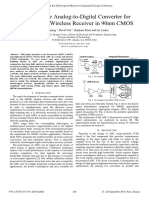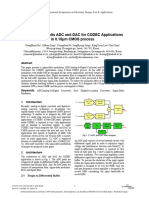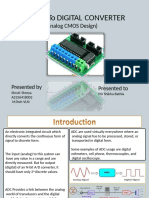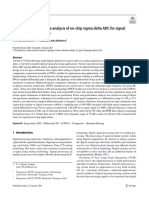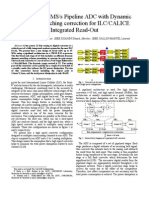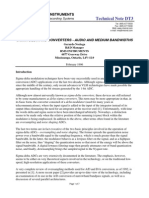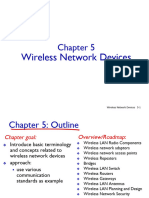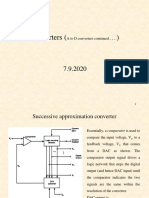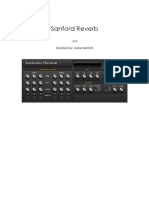0% found this document useful (0 votes)
10 views5 pagesDesign and Implementation of 1 Bit Pipel
The document presents the design and implementation of a 1-bit Pipeline Analog-to-Digital Converter (ADC) using 0.18um CMOS technology. It details the architecture, components, and simulation results of the ADC, highlighting its advantages in digital signal processing and communication systems. The design includes essential elements such as sample and hold circuits, DAC, op-amps, and comparators, achieving a power dissipation of 2.706mW and an op-amp gain of 60dB.
Uploaded by
Chiranjeevi varma PCopyright
© © All Rights Reserved
We take content rights seriously. If you suspect this is your content, claim it here.
Available Formats
Download as PDF, TXT or read online on Scribd
0% found this document useful (0 votes)
10 views5 pagesDesign and Implementation of 1 Bit Pipel
The document presents the design and implementation of a 1-bit Pipeline Analog-to-Digital Converter (ADC) using 0.18um CMOS technology. It details the architecture, components, and simulation results of the ADC, highlighting its advantages in digital signal processing and communication systems. The design includes essential elements such as sample and hold circuits, DAC, op-amps, and comparators, achieving a power dissipation of 2.706mW and an op-amp gain of 60dB.
Uploaded by
Chiranjeevi varma PCopyright
© © All Rights Reserved
We take content rights seriously. If you suspect this is your content, claim it here.
Available Formats
Download as PDF, TXT or read online on Scribd
/ 5






